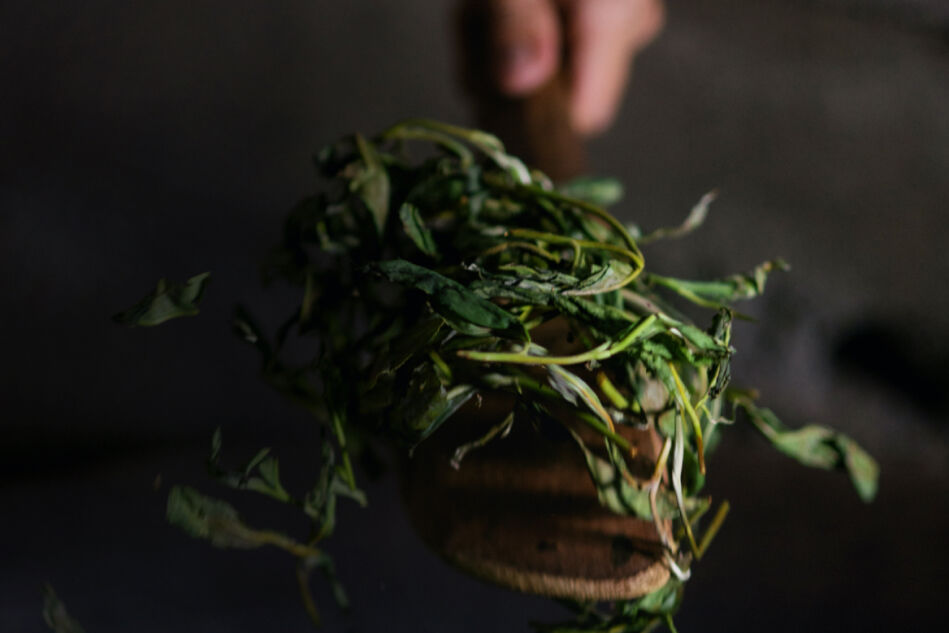About tea pearls and bead tea.
How tea-leaves are shaped.
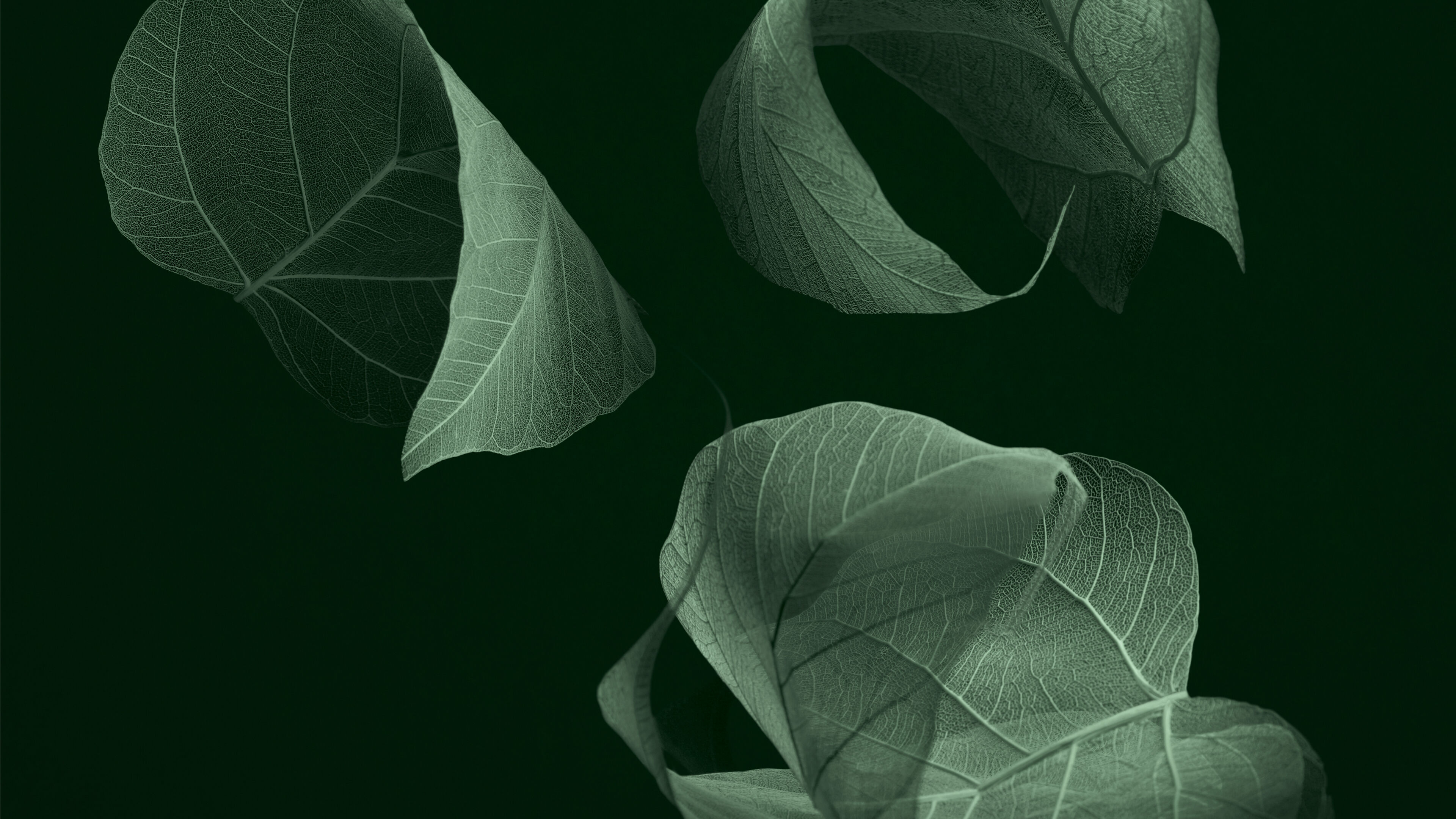
We all come in different shapes and sizes – this is true not only of us humans, but also of tea. There is a huge range of varieties – from white and green right through to black, as well as many different shapes. Whether it’s spherical, needle-shaped or just natural – we introduce tea’s varying appearances and explain why tea leaves are rolled at all.
After the tea leaves have been made soft and pliable as a result of the withering process, they are then shaped - or rather rolled.
About oxidation and oils.
After the tea leaves have been made soft and pliable as a result of the withering process, they are then shaped - or rather rolled. Originally this step was purely manual. Since the industrial revolution, however, the labour-intensive process has been widely mechanised. There are some exceptions. In China in particular hand rolling is often still used today. Machine production involves placing the withered tea leaves in a rolling machine which consists of two large heavy metal plates. These move in a circular motion against one another breaking the cell walls of the tea leaves and in the process giving them their twisted and wiry shape. This does not destroy the tea leaves, instead the process can be compared to rubbing the leaves between your hands. By breaking the cell structure the cell sap is exposed and this reacts with the oxygen in the air and begins to oxidise. Essential oils are also released and these influence the scent and aroma of the tea.
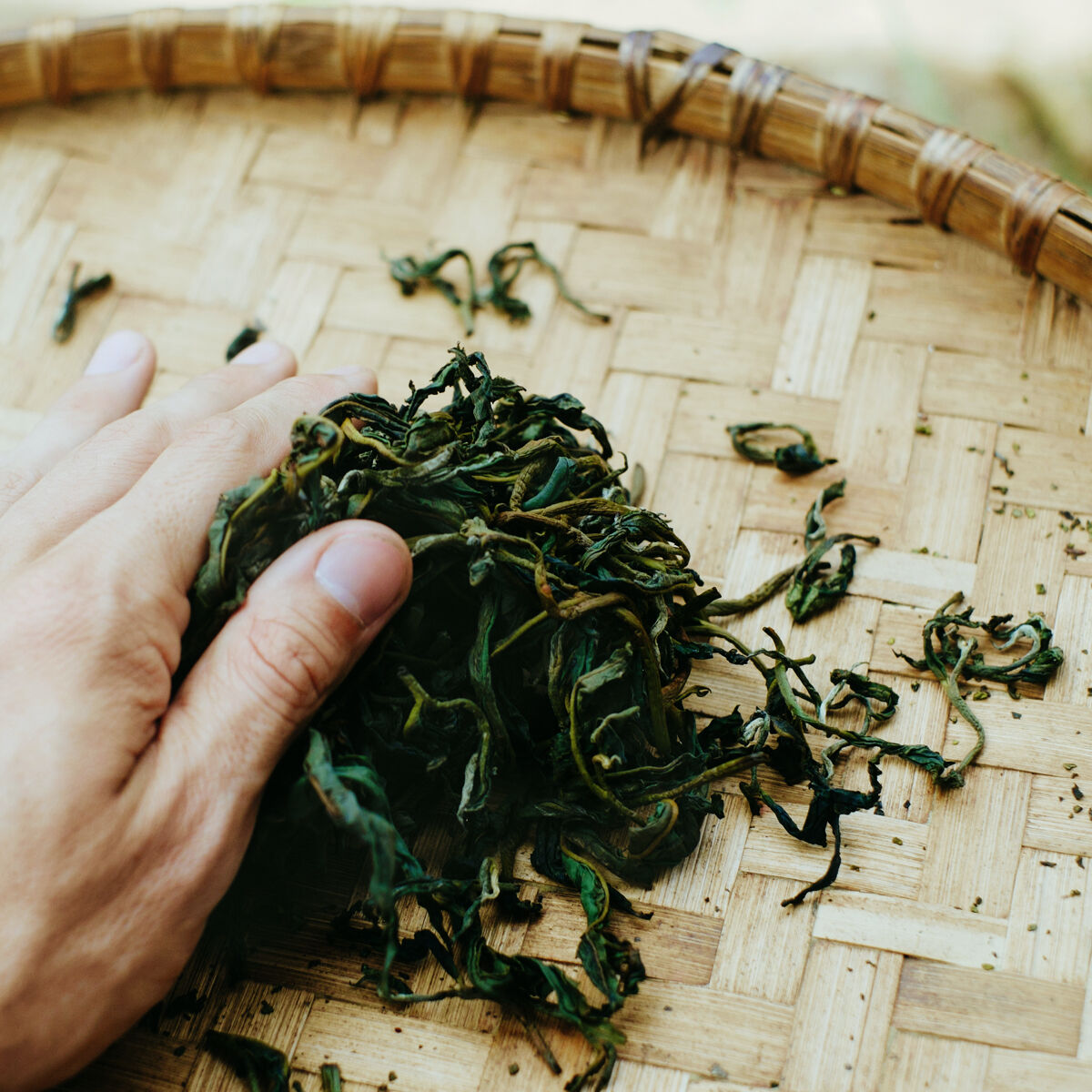

Overall the rolling takes between 30 and 90 minutes and involves several rolls. Following the first roll, the leaves- which are still damp - are removed and sieved. The finest leaves - also called the “first Dhool”- are taken straight on to fermentation, while the remaining leaves are returned to the rolling machine for 30 minutes. This procedure can be repeated up to two times. In general, the following applies: the longer the tea leaves are rolled, the finer the grades of tea produced. Tea leaves rolled only for a short period are barely damaged and can be sold as whole leaf tea. Some teas are rolled to be extra tight and compact in order to take up minimal space when stored.
Rolling is used as an established part of traditional tea manufacturing for most tea varieties such as black tea, pu-erh tea and in particular oolong. However, rolling is often dispensed with in the case of white tea. The reason is that its leaves are so delicate and fragile that they are just dried to ensure the valuable buds remain unscathed. In other varieties however, the leaves are deliberately rolled around the tender bud in order to protect it.
From spherical to needle-shaped.
While tea in countries such as India or Sri Lanka is primarily rolled to intensify the flavour as a result of the exposed oils, in Japan and China rolling has effectively acquired the status of an art form. Pu-erh tea leaves do not actually grow in their curled form, just as oolong doesn't start life in small balls Many teas do not assume their characteristic shape after the harvest. Varieties such as green, black or white tea are most commonly rolled into small balls. However, there are also many other more usual shapes and stories behind them…
“Spiderleg” is the name given to long, twisted tea leaves such as sencha, the shape of which resembles the leg of a spider. There's a similarly interesting story behind the name of gunpowder, the most well-known Chinese green tea. Its name in Chinese is - or “bead tea”. However, other sources suggest it should be named after gunpowder. In hot water, and living up to its name, the gunpowder balls explode with the result that the tea leaves then unfurl their full flavour. Probably the most popular and also the most valuable form of tea around the world is the pearl. This is extremely delicate with an average diameter of 6 mm. Producing PEARLS OF JASMINE depends on the touch of a master tea maker who rolls the tea into its striking form. The pearls are then wrapped in tissue paper and stored until the jasmine blossoms. The freshly picked jasmine is then mixed with the tea pearls. As a result the subtle aroma of the blossom is transferred to the tea.
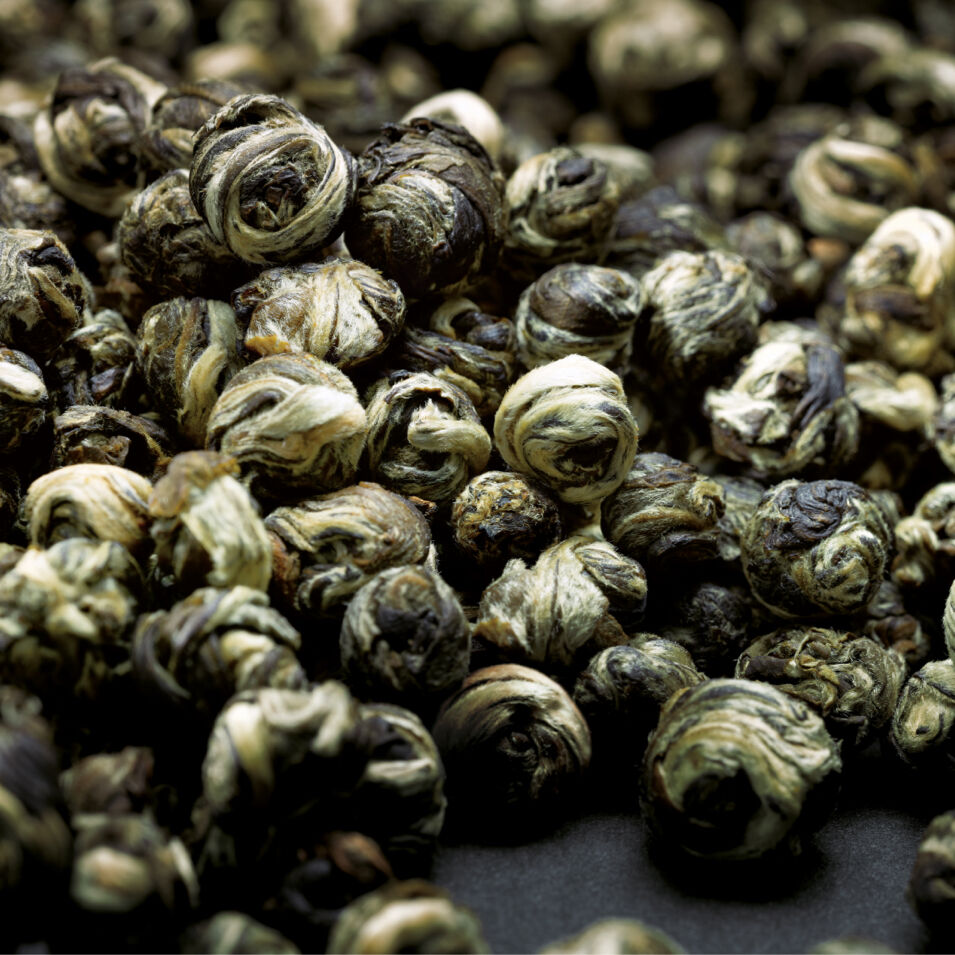
More articles
More articles
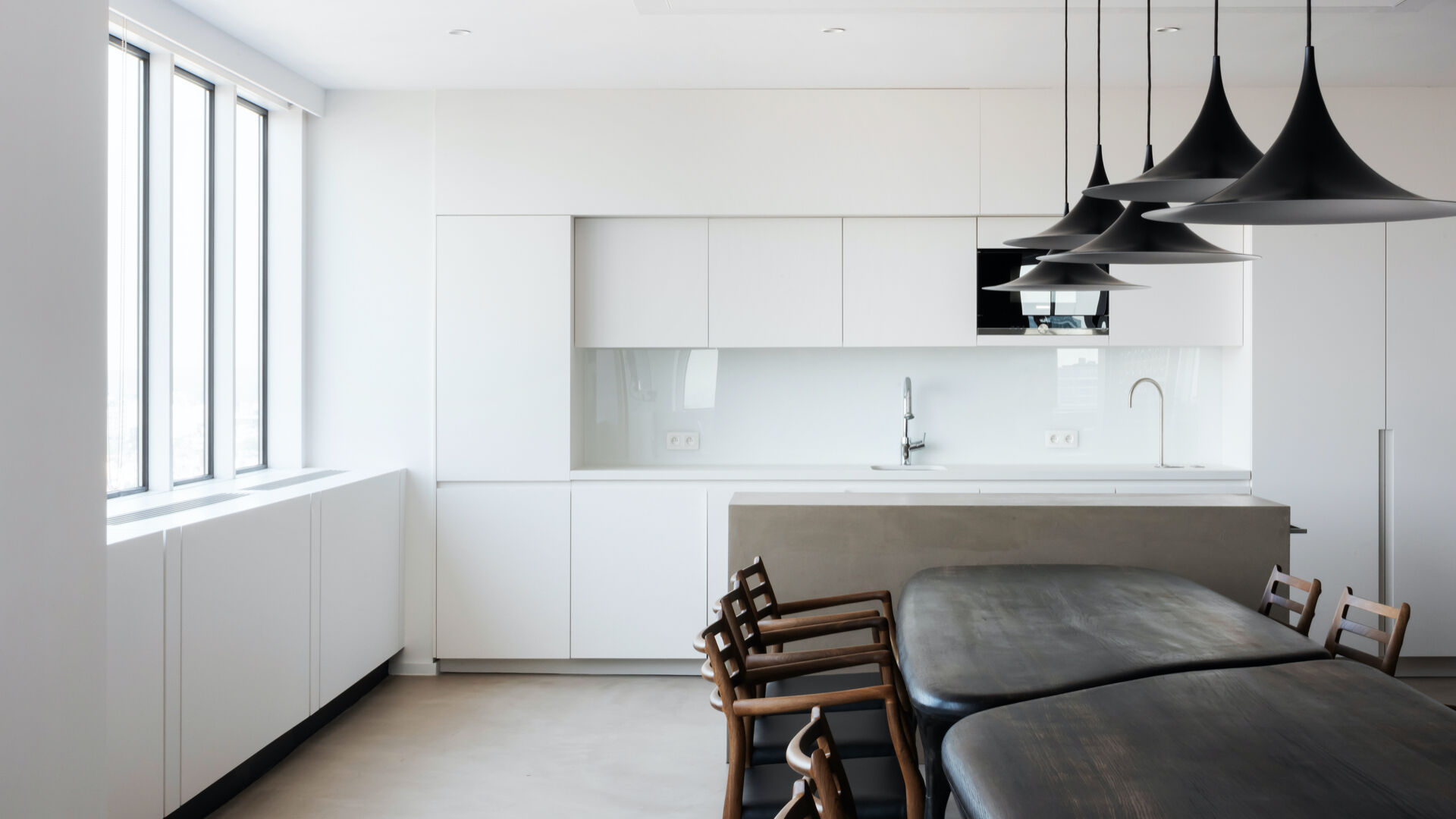
Not less, but better.
Sharpening one's own awareness. Recognizing what one really needs. Giving things new appreciation. That's what minimalism is about. Following the motto 'less is more', more and more people are embracing the desire for clarity and order – even in the design of their homes.

Should we always follow our nose?
23,000 times – that´s how many breaths we take on average per day. And that means a multitude off different scents float in through our nose evoking a wide variety of reactions in us. In this article we´ll explain the psychological reasons behind this and why we should let our noses discover new things more often.
